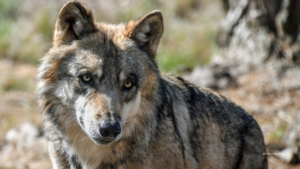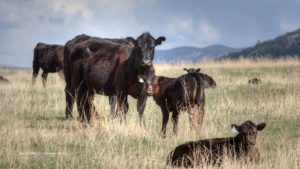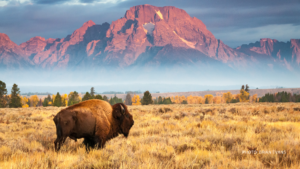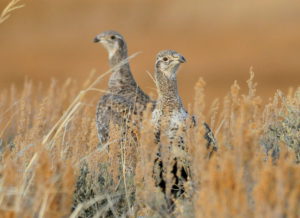Nevada has more public land than any other state except Alaska; over 87% of the state is public. The vast majority is federal land, including 48 million acres of BLM land and 6 million acres of national forest.
WWP’s work in Nevada focuses on oversight of livestock grazing, vegetation treatments, and—increasingly—energy development including oil and gas and poorly-sited renewables, and mining.
Nevada is one of the driest states in the nation, ill-suited for domestic livestock grazing. Nonetheless, grazing occurs over almost all of the federal land in Nevada. Because none of the native plants and animals in the Great Basin evolved with significant grazing pressure, domestic livestock have numerous harmful impacts on those species.
For example, native fish such as Bonneville and Lahontan cutthroat trout, bull trout, and redband trout, often live in small desert streams, where they are highly vulnerable to habitat simplification and degradation from livestock. Cows and sheep break down streambanks, eat and trample riparian vegetation, and pollute water through erosion and their feces. In the Humboldt River Basin, Lahontan cutthroat trout inhabit less than 10% of their historic range, largely because of habitat degradation from agriculture.
Nevada contains some of the largest remaining tracts of high quality sagebrush steppe habitat in the west, important for greater sage-grouse, pygmy rabbit, mule deer, pronghorn, migratory birds, and many other species. Unfortunately, large fires have greatly reduced the extent of sagebrush steppe in recent years. Annual grasses like cheatgrass, which thrive in livestock-disturbed soils, contribute to more frequent fires. And following fires, rapid re-introduction of livestock to burned areas ensures that cheatgrass outcompetes native grasses, perpetuating the cycle. BLM has also created a system of fire breaks in northern Nevada to “compartmentalize” huge areas through ground-disturbing vegetation removal activities—areas where cheatgrass can establish and spread. Notably, while they fragment intact habitat, these fire breaks have done nothing to stop massive fires from continuing to burn sagebrush habitat.
The bighorn sheep population in Nevada recently reached 10,000, which is a substantial milestone in the recovery of the species from virtual extirpation in the state after bighorns were first exposed to exotic diseases carried by domestic livestock. However, there are still many areas of suitable bighorn habitat in the state where bighorn sheep are only prevented from recovering by the presence of domestic sheep grazing on BLM and Forest Service land. Various bighorn sheep herds have experienced die-offs in recent years after coming into contact with domestic sheep. In the Montana Mountains in 2016, NDOW killed dozens of bighorn sheep that were suspected of having contracted pneumonia from contact with domestic sheep. There would be many more bighorn sheep in Nevada if federal agencies declined to permit domestic sheep where they can contact and spread disease to wild sheep.
Because they are so scarce in arid Nevada, springs, seeps, and riparian areas are disproportionately important to wildlife. Unfortunately, cows, which tend to graze and loaf in flat, wet areas along streams and springs, have major impacts to these valuable riparian areas. Even where springs or waterways have been fenced to exclude cows, they are frequently trespassed or in disrepair, so exclosures seldom achieve their intended purpose of protecting sensitive areas from livestock.
In recent years, the BLM has authorized removal of hundreds of thousands of acres of native juniper and pinyon pine woodlands in Nevada. Unfortunately, much of this destruction is done in the name of “habitat improvement” for sage-grouse. However, there is little or no research showing that removing conifers leads to increases in sage-grouse populations. And many other native species depend on juniper and pinyon forests, including deer and elk, and dozens of species of migratory birds. In reality, many of these treatments are done to increase herbaceous vegetation for domestic livestock. BLM, particularly the Ely District, even continues to authorize sagebrush removal—a long-discredited and extremely harmful practice!
Southern Nevada is home to important populations of the Federally Threatened Mojave desert tortoise, which has been declining range-wide due to livestock grazing, off-road activity, subsidized predator mortality, military training range expansion, energy sprawl, and urban development. Increased conservation of habitat is needed to recover this species, and we are working on this.
Nevada is a magnificent place, and WWP will continue to work for protection of public lands and native wildlife in the state.
Please feel free to contact WWP staff who work on Nevada issues:
Paul Ruprecht, Nevada Director
(208) 421-4637
email Paul
(208e






